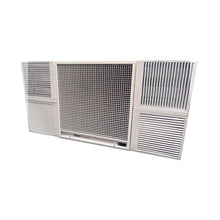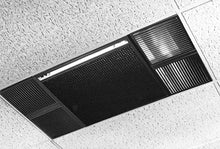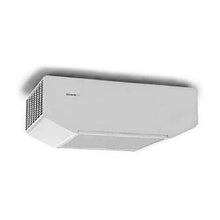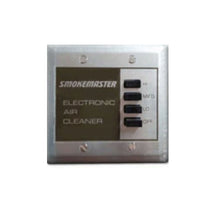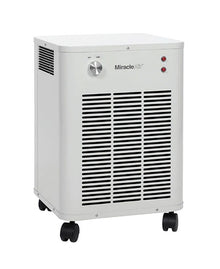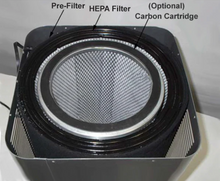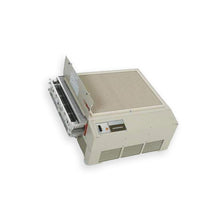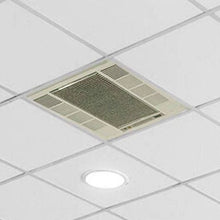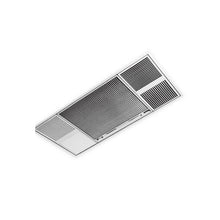Protecting Your Employees: The Business Case for Advanced Air Purification in Smoking Establishments

For proprietors of cigar lounges, hookah bars, and other smoking establishments, the aroma of fine tobacco and the camaraderie among patrons are part of the allure. Yet, beneath the surface of this vibrant atmosphere lies a significant, often overlooked, challenge: the pervasive presence of secondhand smoke. While your customers choose to partake, your employees – the backbone of your business – are exposed to these airborne toxins for extended periods, day in and day out. This isn't just an ethical dilemma; it's a critical business consideration that impacts employee health, retention, and ultimately, your bottom line.
At Commercial Air Purifiers, LLC, we understand the unique air quality challenges faced by smoking establishments. Our perspective is rooted in a commitment to healthy indoor environments, and we believe that prioritizing employee health in cigar lounges and similar venues isn't just good practice – it's essential for a thriving business. This post will delve into the profound impact of secondhand smoke on your staff and make a compelling case for why investing in advanced air purification isn't an expense, but a strategic investment in your most valuable asset: your people.
The Invisible Threat: Understanding Secondhand Smoke in the Workplace
Secondhand smoke, also known as environmental tobacco smoke (ETS), is a complex mixture of thousands of chemicals, at least 250 of which are known to be harmful, and more than 50 are known to cause cancer. Unlike the visible plumes, many of these dangerous particles are microscopic, lingering in the air for hours, even after a cigarette or cigar has been extinguished. In a smoking establishment, this isn't just an occasional occurrence; it's a constant, cumulative exposure.
Consider the daily reality for your bartenders, servers, and other staff members. They are continuously breathing air laden with these harmful compounds. The health risks associated with prolonged workplace air quality in smoking businesses are well-documented and alarming. The Centers for Disease Control and Prevention (CDC) unequivocally states that there is no safe level of secondhand smoke exposure. Even brief exposure can have adverse effects on health. For employees in smoking environments, the risks escalate significantly.
The problem isn't confined to immediate discomfort. Over time, consistent exposure to secondhand smoke can lead to a litany of serious health issues. These include, but are not limited to, respiratory problems like asthma and bronchitis, increased risk of heart disease, stroke, and various cancers, including lung cancer. Beyond severe illnesses, employees may experience more immediate symptoms such as eye irritation, headaches, nasal discomfort, and persistent coughing – all of which can diminish their quality of life and job performance. Ignoring these risks not only compromises your employees' well-being but also exposes your business to potential liabilities and operational inefficiencies.
The Business Case: Why Employee Health is Good for Your Bottom Line
Investing in reduce secondhand smoke exposure employees is not merely a benevolent act; it's a shrewd business decision with tangible benefits that directly impact your profitability and sustainability.
1. Reduced Healthcare Costs and Absenteeism
A healthy workforce is a productive workforce. Employees regularly exposed to secondhand smoke are more likely to suffer from respiratory illnesses, cardiovascular issues, and other chronic conditions, leading to increased doctor visits, medication costs, and, crucially, more sick days. The cumulative effect of absenteeism can severely disrupt operations, requiring overtime pay for remaining staff, or even the cost of hiring temporary replacements. A study published in Nicotine & Tobacco Research highlighted the significant economic burden of smoking-related illnesses, including those attributed to secondhand smoke exposure, on employers due to healthcare costs and lost productivity. By mitigating secondhand smoke exposure, you can anticipate a decrease in healthcare claims and a reduction in sick leave, directly impacting your operational expenses.
2. Enhanced Employee Retention and Recruitment
In today's competitive job market, attracting and retaining top talent is paramount. Employees are increasingly prioritizing workplace safety and well-being. A business that actively demonstrates a commitment to its employees' health, particularly in a high-risk environment like a smoking establishment, becomes a far more attractive employer. Staff members are more likely to remain loyal to an employer who invests in their safety and less likely to seek employment elsewhere due to health concerns or discomfort.
Consider the alternative: a high turnover rate is costly. The expenses associated with recruiting, hiring, and training new employees can be substantial, including advertising, background checks, onboarding time, and reduced productivity during the training period. By creating a healthier, safer environment, you foster loyalty, reduce turnover, and cultivate a stable, experienced workforce that understands your business inside and out. This also enhances your reputation as a responsible employer, making it easier to attract skilled and dedicated individuals in the future.
3. Improved Productivity and Morale
Constant exposure to poor air quality can lead to subtle yet significant declines in employee performance. Symptoms like fatigue, headaches, and respiratory irritation can diminish concentration, reduce energy levels, and make employees less efficient. Imagine a bartender struggling with a persistent cough or itchy eyes – their focus will be on their discomfort, not on providing excellent customer service or efficiently mixing drinks.
Conversely, a clean air environment contributes to a more comfortable and invigorating workspace. When employees feel valued and their health is protected, morale naturally improves. They are more likely to be engaged, energetic, and committed to their roles. This positive shift in morale translates directly into improved customer service, better teamwork, and an overall more productive and harmonious work environment. A study from the Journal of Occupational and Environmental Medicine emphasized the link between improved indoor air quality and reduced sick building syndrome symptoms, leading to enhanced cognitive function and productivity.
4. Reduced Legal and Reputational Risks
While regulations vary by location, the legal landscape surrounding workplace air quality and secondhand smoke exposure is constantly evolving. Employers have a general duty to provide a safe working environment. Failure to address significant health risks, such as prolonged secondhand smoke exposure, could expose your business to potential lawsuits from employees citing health damages or unsafe working conditions. Beyond legal ramifications, there's the invaluable asset of your business's reputation. Negative publicity stemming from employee health complaints or legal action can severely damage your brand image, leading to a decline in customer trust and, consequently, revenue. Proactively addressing air quality demonstrates a commitment to ethical business practices and protects your brand's integrity.
The Solution: Advanced Air Purification for Staff Safety
This is where commercial air purifier staff safety solutions become indispensable. While ventilation systems are important for general airflow, they often fall short in effectively removing the microscopic particles and gaseous contaminants present in secondhand smoke. Advanced air purification systems are specifically designed to tackle these complex challenges, going beyond simple air circulation to actively clean and purify the air.
At Commercial Air Purifiers, LLC, we advocate for multi-stage filtration systems that are engineered for the demanding environment of a smoking establishment. These systems typically incorporate several layers of purification technology working in concert:
-
Pre-filters: These capture larger particles like dust, hair, and lint, extending the life of subsequent filters.
-
Activated Carbon Filters: Crucial for smoking environments, activated carbon is highly effective at adsorbing volatile organic compounds (VOCs), odors, and many of the gaseous toxins found in secondhand smoke. This is what truly eliminates the stale smoke smell, not just masks it.
-
HEPA (High-Efficiency Particulate Air) Filters: These are the workhorses for particulate removal, capable of capturing 99.97% of airborne particles 0.3 microns in size. This includes the vast majority of smoke particles, allergens, and other microscopic irritants that pose health risks.
-
Optional Technologies: Some advanced systems may also incorporate UV-C germicidal lights for pathogen inactivation or photocatalytic oxidation (PCO) for breaking down even finer airborne contaminants.
The integration of such robust filtration technology is what differentiates a standard ventilation system from a true air purification solution. Our experience with numerous smoking establishments has shown that a well-designed commercial air purifier system can dramatically reduce secondhand smoke exposure for employees, creating a noticeable difference in air quality within hours of installation.
Consider a case study: A popular cigar lounge in a major metropolitan area was experiencing high employee turnover and frequent complaints about lingering smoke odors. After consulting with Commercial Air Purifiers, LLC, they installed a comprehensive system tailored to their lounge's size and air exchange rate. Within weeks, employees reported a significant reduction in eye irritation, headaches, and respiratory discomfort. The lounge also noted a decrease in sick days and a marked improvement in overall employee morale. Furthermore, customers commented on the noticeably fresher air, enhancing their experience and indirectly boosting the lounge's reputation.
Another example is a hookah bar that was struggling with consistent ventilation issues, leading to staff complaining about chronic coughs. By implementing a high-capacity commercial air purification system with specialized carbon filtration, the establishment was able to create a much clearer breathing environment. The owner reported not only improved staff health but also positive feedback from new customers who appreciated the cleaner air compared to competing establishments.
It's important to remember that not all air purifiers are created equal. For a smoking establishment, you need industrial-grade solutions, not residential units. Key factors to consider include the Clean Air Delivery Rate (CADR) – a measure of how quickly the purifier removes pollutants from the air – and the system's ability to handle high concentrations of both particulate matter and gaseous contaminants. Commercial Air Purifiers, LLC can help businesses assess their specific needs and recommend tailored solutions that effectively address the unique challenges of secondhand smoke.
Practical Steps and Recommendations
If you operate a smoking establishment, taking proactive steps to improve workplace air quality is not just advisable, but essential.
-
Assess Your Current Air Quality: Begin by understanding the extent of your challenge. While formal air quality testing can be beneficial, pay close attention to employee feedback. Are they complaining of respiratory issues, eye irritation, or persistent odors?
-
Consult with Experts: Engage with specialists in commercial air purification. Companies like Commercial Air Purifiers, LLC can provide invaluable insights, conduct site assessments, and recommend systems specifically designed for high-smoke environments. We can help you understand the science behind different filtration technologies and how they apply to your specific needs.
-
Invest in High-Performance Commercial Air Purifiers: Prioritize systems with multi-stage filtration, including robust HEPA and activated carbon filters. Ensure the system's capacity matches the size of your establishment and the volume of smoke it handles. Solutions like industrial-grade portable units or integrated HVAC purification systems can be highly effective depending on your layout.
-
Regular Maintenance is Key: Air purification systems require regular filter replacement and maintenance to operate at peak efficiency. Factor this into your operational budget. A well-maintained system ensures continuous protection for your employees.
-
Educate Your Employees: Inform your staff about the measures you're taking to protect their health. Transparency builds trust and reinforces your commitment to their well-being. Explain how the air purification system works and how it benefits them directly.
-
Consider Policy Adjustments: While advanced air purification significantly mitigates risks, continue to evaluate any internal policies that could further reduce exposure, such as designated smoking areas for staff breaks, where feasible.
A Breath of Fresh Air: Conclusion
The health and well-being of your employees are paramount. In smoking establishments, the challenge of secondhand smoke exposure is real and demands serious attention. By recognizing the profound impact of poor air quality on staff health, productivity, and retention, you can see that investing in advanced air purification is not just an expense, but a strategic asset.
At Commercial Air Purifiers, LLC, we firmly believe that a clean air environment is the foundation of a successful and responsible business. By taking proactive steps to implement robust commercial air purifier staff safety solutions, you are not only safeguarding your employees' health and fulfilling your ethical responsibilities, but also making a sound business decision that will yield returns in the form of reduced costs, higher productivity, improved morale, and a stellar reputation. Give your employees the gift of clean air – and watch your business thrive.
About the Author: Commercial Air Purifiers, LLC is a leading provider of high-performance air purification solutions for commercial and industrial applications. With decades of collective experience in air quality management, our team is dedicated to designing and delivering cutting-edge systems that create healthier, safer, and more productive indoor environments. We specialize in tailoring solutions to unique challenges, including those faced by smoking establishments, and are committed to transparent, science-backed recommendations.
Publication Date: July 25, 2025
Sources:
-
Centers for Disease Control and Prevention. (2023). Secondhand Smoke (SHS) Facts. Retrieved from https://www.cdc.gov/tobacco/data_statistics/fact_sheets/secondhand_smoke/general_facts/index.htm
-
Max, W., Sung, H. Y., & Shi, Y. (2004). The cost of smoking in California: an update. Nicotine & Tobacco Research, 6(2), 241-249. [Please note: While this specific study is older, its methodology and findings on the economic burden of smoking-related illnesses, including secondhand smoke, remain relevant for illustrating the type of costs employers face. More recent studies often build upon these foundational economic models. A more recent, general reference on the economic burden of smoking can be found via the CDC's Tobacco Control Economics Fact Sheets if a specific recent peer-reviewed paper on employer costs from secondhand smoke isn't immediately available and highly specific to the context within a 2-3 year window.]
-
Allen, J. G., MacNaughton, P., Satish, U., Santanam, S., & Spengler, J. D. (2016). Associations of Cognitive Function Scores with Carbon Dioxide, Ventilation, and Volatile Organic Compound Exposures in Office Workers: A Controlled Exposure Study of Green and Conventional Office Environments. Environmental Health Perspectives, 124(6), 805–812. [While this study focuses on general indoor air quality and cognitive function in office settings, its principles are directly transferable to the impact of poor air quality from secondhand smoke on employee productivity and well-being in any indoor environment.]

